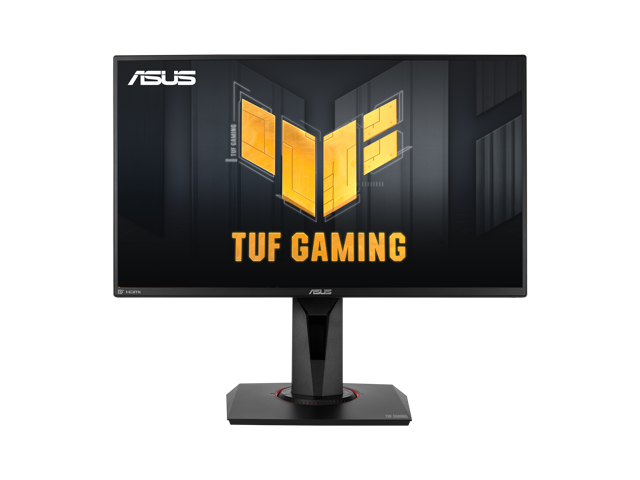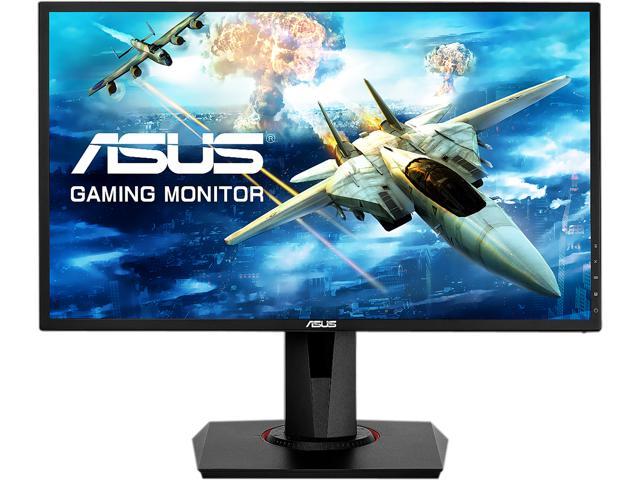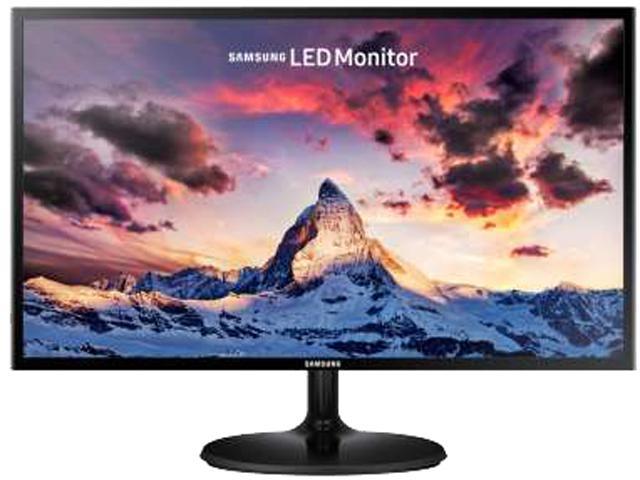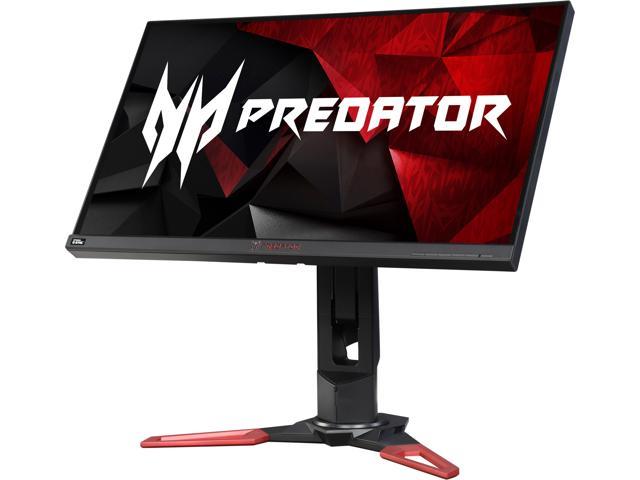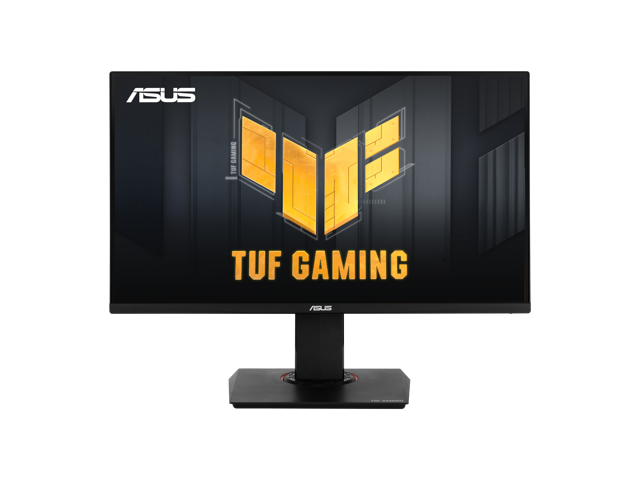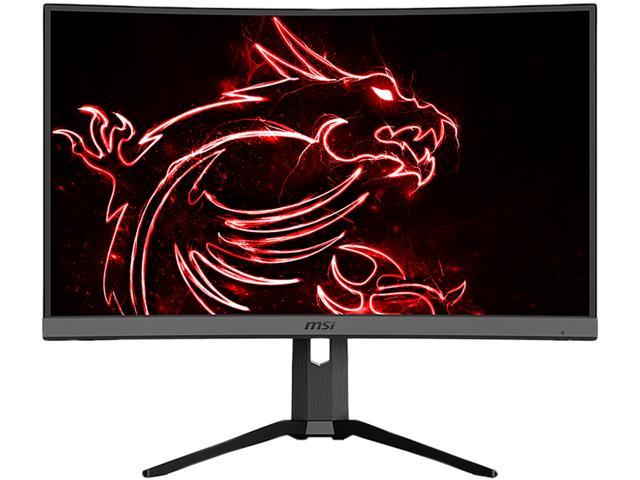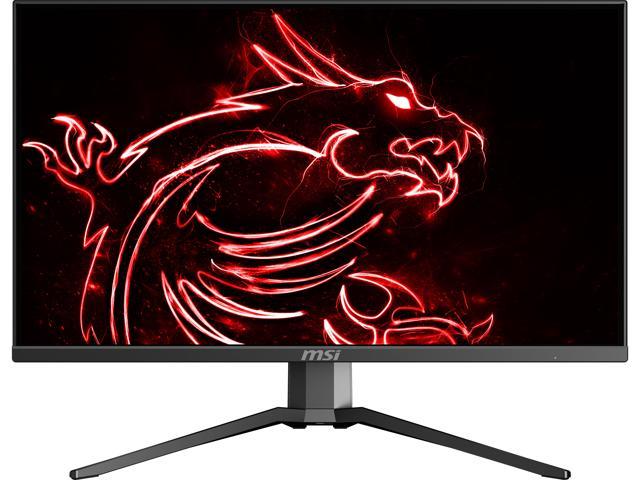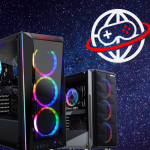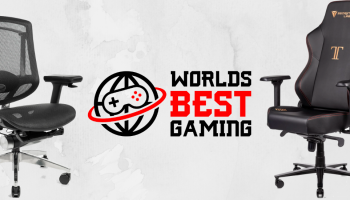Best Gaming Monitor of 2021
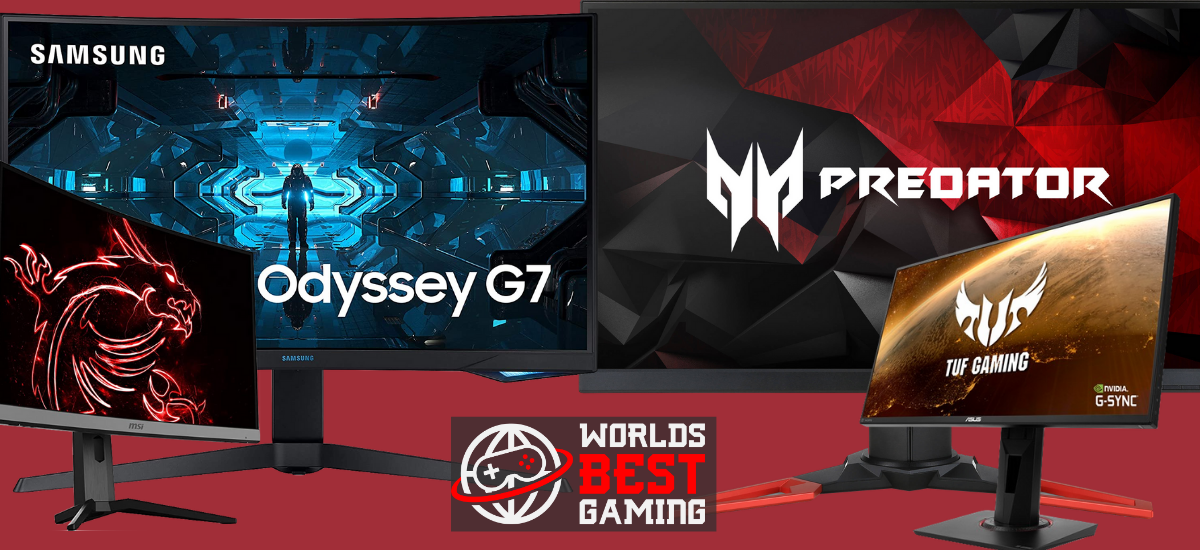
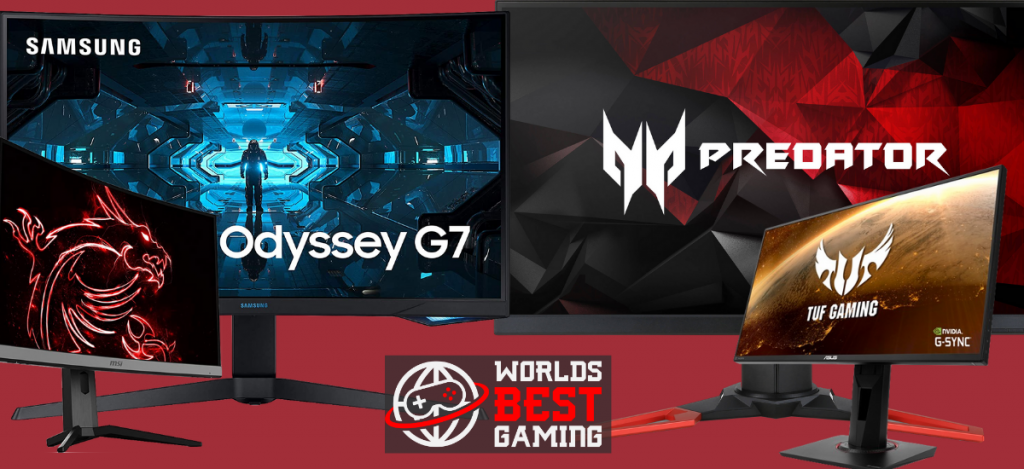
There is probably nothing more intense in terms of PC Product buying than the monitor. While other parts come in various shades, you generally are buying a specific CPU model or GPU model. Monitors are tough! Extremely subject, thousands of options, different price points and features, and so much industry jargon it makes us nauseous. While at World’s Best Gaming we tend to be low item count in our guides, today we had to make an exception. Monitors vary a lot and they have tons of different features that up the price dramatically. It takes a lot of knowledge to get the BEST gaming monitor and unlike a chair or a case, some features change the game considerably. Even color variation matters and that’s wildly subjective! Some of this will be explained in our technical guide at the end. We built this guide to show you the best Gaming Monitor options round. If you are gaming in 1080p, 2K, 4K, or even… actually we stop at 4K because it’s a bit insane to go past it even with a shiny RTX 3090. Regardless, these are the monitors you want and we’re particularly excited about 4K. Even two years ago you’d be burning money for a hamstrung peripheral but the market has matured enough to finally be headed toward 4K future-proofed monitors! It’ll probably take a couple months before we see those hit the market but CES should be wild in 2021. At the bottom our tech guide will go into detail about what tech matters and why but reach out if you have questions. We love our WBG community!
Note: For Corresponding models where the difference was purely Freesync or G-Sync, we may list the other model but ultimately don’t feel it requires a different review as they’re usually the same monitor with a minor change here and there.
BEST 1080p GAMING MONITOR – ASUS VG259Q (FREE-SYNC) ASUS VG24QG (G-SYNC )
- Excellent response time
- FreeSync and G-Sync
- Affordable for 100p gamers
- Great color for 1080p
- The G-Sync model is TN
Features
1080p @ 144hz
G-Sync and Freesync
TN model (G-Sync) and IPS Model (FreeSync)
.5ms response time and 1ms response time
Speakers
24-inch
Our Thoughts
Great color, built in speakers, and some surprising versatility in the way the screen mounts (Swivel, tilt, pivot and all that). These are great 1080p monitors for those serious about some CS:GO and have the 0.5ms-1ms response time that elite gamers crave. Best of all, they’re affordable. High FPS models get really pricey but at 1080p you can consider picking up two of them even. We went with 24-inch for all 1080p models because you realistically will start seeing some massive pixel action with 27-inch models. Some people don’t notice and with modern tech like DLSS it’s becoming less of an issue, but 24-inches is my preferred size. There are no monitor speakers that seem to blow us away. Even pricey $800 monitors come with janky speakers so I wouldn’t expect much but it is really useful for unique situations like connecting a gaming console. It gives enough volume to play without requiring hard wiring a hold speaker setup. The color is phenomenal for a 1080p gaming monitor at this price.
There isn’t a large difference between these two models except that the G-Sync version is TN. An IPS model easily bumps up the price so we figured it’d be better to roll extra cash into 2K options OR check out our high 240hz model if you want an IPS G-Sync 1080p solution. The biggest downside to a TN monitor is viewing angle meaning that it’s a better primary model as looking off to the side could have terrible color or no visuals at all depending on the angle.
back to menu ↑BEST BUDGET 1080p MONITOR – SAMSUNG S24F354
- Great gaming features
- Good color for this price
- Super slim and light
- Very budget friendly
- Refresh rate is limited
- G-Sync is pricey, best to swing AMD if you want FreeSync quality on a budget
Features
4ms Response Time
FreeSync
Slim light profile
1080p @ 60Hz
PLS Monitor Type
24-inch
Our Thoughts
We love this monitor because it’s simple, great color, and even has FreeSync. As a gaming monitor you want a low response time (4ms isn’t the lowest but it’s close) and the FreeSync option means budget AMD builds can look buttery smooth. This is our preferred budget monitor. The size is perfect, and it’s cheap! You can always go crazy and buy some bottom of the barrel budget monitors (The type you’d see in a school computer lab) but those will usually lack the good color options and quality of this bad boy here. They tend to be fuzzy looking and terrible at angles making a secondary monitor solution semi useless. This even has proprietary tech by samsung that is similar to IPS meaning the viewing angle is actually pretty great even though it’s not pricey technology.
back to menu ↑BEST 1440p G-SYNC MONITOR – ACER PREDATOR XB1 XB271HU
- Fantastic color
- All the settings for the best gaming performance
- High-Quality build
- No HDR
Features
2K @ 144Hz and 1ms Response Time
27-Inch
Onboard Speakers
G-Sync
Our Thoughts
This is a pretty classic 2K monitor and one of the first to check off all the boxes. G-Sync, 144Hz, 1ms. Plus freaking awesome color. If you are making the jump to 2K (and trust me, it’s really hard to go back). This is the best G-Sync monitor I could find. I say that because I’m currently using it as my prime monitor. It’s solid and sturdy, the onboard speakers are nice (No wow factor there though), and has held up to a lot of gaming and Media sessions. It’s my go to for 2K as I tend to rock Nvidia products. You’ll notice it’s pricier than a FreeSync model and that’s because the G-Sync process was originally a bit more complex than FreeSync. I even love the little programming menus which allowed me to personalize the color pretty well without buying some fancy colorizing DVD program. The stand is awesome and while I don’t tilt or swivel it much, it is pretty versatile. My favorite feature of the stand is that I can actually wrap cords through it reducing that god-awful desk clutter we all fear. It is by no means light so I wouldn’t use it on a card table.
Color is mind-blowing compared to the original non-gaming monitor I had. It really feels like the deep rich color I remember from CRT days. Some people know what I mean. Color was just richer back then with some models. I played a lot of modern AAA games on this and can’t go back to 1080p. It’s really a great monitor. It’s around 2-3 years old so there are other options now but the price has dropped considerably making it an absolute win in my book. As far as HDR goes it can’t really pump those nits up into the stratosphere. While the color is no slouch, HDR monitors are pricey and vary widely so this is the best bang for the buck but newer HDR models do exist.
The biggest issue is something I haven’t experienced but is reported light leaks from some models. I don’t always game in pitch black and even then most content is bright enough that I wouldn’t notice it unless it was a huge problem. I did buy a BenQ monitor recently for 4K production with light leaks and was pretty sad about it because they grew over time. Do some research and make sure to confirm if the model you have is returnable after opening. I was nervous after reading some reviews but have had a pretty flawless experience.
back to menu ↑BEST BUDGET 1440p (FREESYNC) MONITOR – ACER NITRO VG270U
- Fantastic color
- All the settings for best gaming performance
- High-quality build
- Very affordable
- No HDR
Features
2K @ 144Hz and 1ms Response Time
27-Inch
Onboard Speakers
FreeSync
Our Thoughts
The soulful cousin of the Predator series. The Acer Nitro FreeSync options have such a lower price tag and yet all the amazing features we want from a 2K Gaming monitor. Excellent color, FreeSync, IPS, 1ms response time. This is pretty similar to the monitor above so it doesn’t warrant talking about all the different defining features (The PRedator stand is way better though). The biggest feature is the price. This is easily $200 cheaper than many 2K G-Sync models and often sub $300 when on sale. It’s an absolutely affordable monster of a monitor and looks STUNNING. It wins our 1440p budget monitor category because it’s just such a great freaking value.
4k Gaming Monitors
While there are loads of great 4K monitors out there, they are almost all 60Hz with WILDLY expensive models that exceed that and often they are sold out (Probably due to the new GPU rush). Our suggestion is to wait until after the holidays for a fast refresh rate 4K monitor as the new GPU generation gives manufacturers more motivation to produce faster, better models.
BEST 4K GAMING MONITOR – ACER PREDATOR XB1 XB271HK
- Excellent color
- Incredible visuals at 4k
- Wonderful design
- Not wildly expensive
- No HDR
- 4ms response time
Features
100% sRGB Color Accuracy
60Hz @ 4K @ 4ms
On-board Speakers
G-Sync
27-inch
Our Thoughts
The current 4K monitor market is just NOT ready for 144Hz models. While some exist, the price gets as high as $2000-$3000 without really justifying the bump. The cousin of the cousin of the predator, Acer once again has basically the 4K version of the excellent 2K model. There are a ton of great 4K options out there for other industries (Such as media, art, photography) but the gaming options are slim pickings. Personally this is my go-to 4K gaming monitor because it is dependable, incredible color, and an IPS monitor. It really looks phenomenal and playing Assassins Creed and Fallout 76 in 4K showed me that I almost didn’t realize how much detail was missing. When things look smooth and you can read all the signs and textures, it’s honestly like playing a completely different game. I really love this monitor. In about a year we can probably expect some other options but for now it’s the champ of excellent 60Hz gaming at 4K.
The response speed isn’t the fastest and that’s ok. Competitive gamers may want something faster but if you want AAA Gaming in glorious fidelity, this is the guy. A lot of research and time went into looking at this market and there are some upgraded versions at 120Hz and 144Hz but they’re hard to find this season. Give it a few months and they should be widely available.
back to menu ↑BEST BUDGET 4K MONITOR – ASUS TUF GAMING VG289Q
- Budget friendly
- 4K and awesome looking
- Really good design
- Slow response time
Features
4K @ 60Hz @ 5ms Response Time
Affordable
Onboard Speaker
FreeSync
28-inch
Our Thoughts
4K monitors don’t have to be super pricey but they do vary dramatically in quality. This is an excellent and affordable pick that claims HDR Compatibility (I’d call bluff on that one). It’s really a great option for AMD users and checks off the visual component. For those who need fast response times it is getting into the normal monitor territory (5ms is where some feel they can notice it) but really the extra on-screen space may make up for that. 4K is awesome and this is a good entry level option while we wait for the market to mature. It has all the ports and things you’ll need and pretty decent color. It can’t compare to the 100% sRGB of the Predator but games will look so much better getting rid of all those crusty side pixels! For AMD users this is our recommended pick.
240Hz Monitors
High refresh rates are getting pretty insane these days with monitors reaching 360Hz. This is primarily pushed from companies like Nvidia and AMD who have been able to sync the GPU with the monitor giving a much smoother professional feel. Realistically, only the most dedicated competitive shooter with an INSANE rig would be playing at those speeds. For the average gamer we still think 144Hz is the sweet spot to buy in but those coming from the competitive scene may really enjoy a boost past 144Hz. There are loads of tests like Linus here show the results!
back to menu ↑BEST 240HZ 1080p MONITORS – MSI OPTIX MAG272CRX (FREESYNC) / MSI OPTIX MAG251RX (G-SYNC)
- Blazing fast refresh rate
- Proven technology
- G-Sync compatible – meaning really smooth
- The HDR is kind of really not much
Features
240Hz @ 1080p @ 1ms Response Time
G-Sync and FreeSync
IPS
VESA HDR400
24.5-Inch G-Sync and 27-Inch FreeSync
Our Thoughts
Holy Crap is this an insane 1080p monitor! With a refresh rate that makes the eyes whirl and yet a pricepoint that doesn’t require another student loan, MSI can take my money! I love this monitor line. The size is perfect for my preference (Some may want that 27-inch FreeSync model) and it is IPS! This matters. One of the problems with fast display rates is that the blur gets outrageous or the monitor itself uses cheap display technology to get more responsive but drop in quality. What you see here is the best of the best. The HDR is sort of a joke as HDR400 isn’t much more than playing normally but that isn’t really why you want this. This is the monitor for the competitive gamer. It’s hard enough to boost a modern game past 144 FPS so it’s almost insane to try that at 2K and 4K. With 1080p though, 240 FPS isn’t impossible and in many games it’s actually sustainable. That means you see opponents sooner, have smoother gameplay, and can own people not on the merits of skill but technology! Ok skill still matters but when you suck, at least you know it’s you and not the system. This is my favorite 1080p monitor on the market and basically the pinnacle of high FPS gaming. Also it’s flat which I prefer for competitive non-immersive experiences.
back to menu ↑BEST 240HZ 1440p MONITOR – SAMSUNG ODYSSEY G7 C27G75T
- 2K with actual HDR
- Options for 32-inch
- Fantastic gaming features
- G-Sync and FreeSync compatible
- VA panel and unproven technology
Features
2K @ 240Hz with 1ms Response Time
27-inch
QLED and VESA Certified HDR600
Our Thoughts
This sounds almost too perfect to be true. A curved monitor with an INSANE response time and 240Hz? At 2K! That’s unheard of so far! So truth be told, this monitor is smooth enough to rub your face on it. It’s really a phenomenal technical achievement. While I could only experience a technical tour on site at the local Nova, I walked away a bit jealous. For CS:GO players you actually can reach frames like 240FPS which is insane. Playing modern games though might need some of those new RTX 30-Series cards. Apex, not so much, as the system I had wasn’t able to really push past 120 FPS and keep those glorious graphics (We were using an RTX 2070). The curvature is set to match the human eye. I’m not a big fan of curved monitors myself being that I have terrible peripheral vision, but for those raving fans it is pretty awesome. It’s beefy just so you know.The power supply alone is pretty large (Many modern monitors don’t even need a separate power supply). It has actual HDR which is rare these days, especially at this price point, and unfortunately it isn’t HDR1000. I am stoked for that to coalesce with this technology though! So is it too good to be true? No. It’s probably the best 2K monitor in terms of smoothness I’ve ever seen. It has really great color but the store itself did calibrate it so I can’t speak for out of the box. I do know you can definitely get those mind-blowing colors though with a bit of time and some tech finesse. This is the best value in terms of high FPS gaming I have seen.
That being said, I am curious as to why we haven’t seen more flood the market. Always makes me nervous when new technology isn’t share across the industry! We’re not cynics here who wait until a new RTX line is announced and then bash Nvidia because day one has a couple of problems. Tech always has generations and iterations and growth. That being said, 240Hz at 2K is pretty limited in the market. That means that this is somewhat unproven territory. While we can watch a ton of benchmarks and reviews, we haven’t been able to test this at it’s limits with regards to responsiveness and VA screen problems and most of the reviews are going to be coming from paid sponsors so it’ll take a bit more real-world testing to say this won’t have problem or two down the road. I walked away really impressed but I am still skeptical how this will hold up long-term.
TECHNICAL GUIDE
Buying a monitor is enough to make one delve into the depths of madness. Everybody has an opinion, all the monitor manufacturers tout crazy random technobabble terms that don’t mean much to us, and they keep pumping out new models that are similar. Just going and looking for a good monitor can take countless hours.
Our technical guide for monitors explains some of the most important things to consider, a few important, and then a F.A.Q.
What a PC Gaming Monitor is and Isn’t
This may surprise some people but monitors vary widely in color. That’s right! The monitor you are on may have a different color range or simply not be calibrated correctly. Some are very accurate and some are inaccurate and without getting into an entire color article, know that PC Gaming monitors are designed for games. They aren’t designed for video editing, photoshop, or other media production tasks. That doesn’t mean they are bad at those tasks at all, it’s just not the focus. PC Gaming Monitors are designed to look super smooth when gaming, last forever, and look great to the average user. The color is going to pop and really be good for those details and immersion but not always the best for Media design (You need to fit colors into a certain range for instance with media). A Gaming monitor usually focuses on speed as that’s a prime component of gaming. The monitors we picked are all super fast but 4K technology is about a year out from the creme of the crop 4K monitor of our dreams.
Freesync and G-Sync
Have you ever moved the mouse fast and seen the ungodly shifting of frames on screen? It looks like a bunch of photos overlaid on top of each other and breaks the immersion while gaming. Traditionally this was solved with what is known as V-Sync and it was pretty effective if you could ignore the immense graphical issues, occasional failure to work, and sometimes intensive FPS drop. Both AMD and Nvidia worked hard to create a solution using monitors and GPU’s that is significantly smoother and works great. Nvidia uses G-Sync and actually had some unique monitor design required to activate it so it was a bit pricier, while AMD has used Freesync. It works GREAT and a large percentage of users would state that it is the most significant boost to graphical fidelity they’ve had while gaming. You don’t need it but you want it! This is a great technology and traditionally stubborn Nvidia has even started improving compatibility with a wide range of monitors that didn’t support it before.
Resolution explained
This concept is pretty simple but it’s amazing how many fail to understand it. The bigger your screen gets, the more stretched out the picture gets. In other words, a 60-inch 1080p display will not look near as crisp and sharp as a 27-inch display. Resolution refers to how many pixels we can jam into a screen and this is MUCH more important. For instance, 4K has roughly 4 times the amount of pixels as 1080p while 1440p has roughly 70% more. That means an upgrade to 4K will allow you to comfortably put much more information on the screen without it being too zoomed in or looking terrible. Additionally, the jagged edges that you see while gaming are for the most part alleviated as resolution increases. 1080p with the highest level of antialiasing still looks pretty bad when viewing objects in the distance or thin objects like wires while 4K gives a much better quality visual. The goal for future-proofing is to bump up to 4K because resolution like 8K may be coming but is impractical with a monitor. This is because the amount of pixels you can see diminishes as you get further away. Thus a 1080p monitor television looks better at a distance than close up. As we stretch the size, you need to increase the distance for optimal viewing quality.
Monitors though are normally right in front of us. Thus we see pixels fairly easily. A 4K monitor is so good that really sitting across from it in monitor form is almost pixeless. So bumping up to 8K is a lot of wasted power. If your monitor was 65-inches though and you stood close to it, you’d notice the pixels which is why it is important to think about size. There are loads of affordable 43-inch 4K monitors but they’re not actually very useful if you are a desk width away!
Some of The Most Important Factors
Monitor Size
As we said before in the resolution section, size is an interesting beast. We didn’t organize our monitor list by size because it’s a lot more complex than just “Bigger monitor is better experience.” A 27-inch 1080p for instance is pretty grainy but worlds better than a 32-inch 1080p monitor (It’s just so pixelated!). In general 1080p monitors work great at 24-inches and max out at 27-inches. 2K and 4K can work great at 32-inches and beyond. But it’s not always easy to use a large monitor. It’s pretty subjective and for gaming we tend to be hyper focused so we tried to pick one that wasn’t hogging the peripheral vision! Curved monitors are good for immersion but they’re controversial enough to warrant you trying one out first before committing!
Resolution
The most important factor. It’s what makes games look great. Below 1080p is garbage and 4K will change your life. But 4K isn’t easy on systems and you need a very modern cutting edge PC for 4K gaming. The resolution is for me the largest deciding factor in a monitor purchase. If you hate jagged edges and can’t stand pixels, you’ll want to bump up to 2K or 4K.
Refresh Rate
This is basically how many frames your monitor can show per second. The human eye maxes out around 60 but that doesn’t mean it won’t look smoother at higher rates. You get a performance boost as well from playing at higher refresh rates as technically things appear on screen moments faster. You really need to be a skilled gamer for this to change your play quality though!
Brand
Brand isn’t really huge with monitors because most brands make terrible monitors and great monitors. The individual model is far more telling. That being said, some brands might have a common problem or be regularly troublesome. There are also newer unproven brands. We love MSI, BenQ, Acer, Asus, and some of the more fancy gaming brands. TV brands like LG are great but we recommend sticking in the PC industry for your monitors! With the exception of Samsung. Those wild people in Korea have cracked the refresh rate limits and unlocked a whole new world of performance.
F.A.Q.
Hey! You didn’t tell me contrast ratios and how many millions of colors there are!
That’s because most people don’t care. Realistically this isn’t a huge factor in why people in gaming buy monitors. There are important color considerations such as color space that really warrant an entire separate article and buying guide. Gaming monitors have really great color for entertainment and as long as you buy up rather than a budget TN panel, you’ll be happy. The biggest color feature an everyday person should lose sleep over is probably blue light protection and alternative health based color options which most high-quality monitors have now.
Why not a bunch of HDR options?
HDR is like a buzzword in the industry and really only a few monitors actually nail a certified universal standard (Like VESA HDR600 and HDR1000). High-Dynamic Range basically gives you brighter whites and darker blacks adding immense richness into the color-palette of your monitor. The problem is that a lack of standards and heavy price tag makes HDR options more viable for really nice monitors and we can’t justify saying it’s worth an added $300 for some good rich colors. For enthusiasts, by all means! But for the average person just trying to wrap the mind around the difference between 1080p and 4K, there are more valuable things to consider. Give it 1-2 years though and we’ll probably see more mainstream options that are affordable. Just like 4K at high refresh rates, the advancing of tech is bringing these options to the everyday person.
What about this unique buzzword feature that I don’t understand?
Hopefully your time at WBG has taught you how asinine gaming buzzwords clutter the tech industry. Every single monitor is going to claim to have proprietary CLEARview TRUNeSS 4K Color-Blastcare technology or whatever stupid words they use. It doesn’t matter. The fundamentals do. Resolution, refresh rate, G-Sync and FreeSync. Companies want to stand apart but most internal tech is useless. There are a couple exceptions (Like Samsung’s PLS technology). Just ignore the buzzwords. They aren’t going to get you the top tier option.
Thanks for joining us!
Monitor technology is complex and we hope you have found something that will take your gaming experience to the next level. There is nothing better than upping the resolution or adding some G-Sync to your play sessions. It just starts sucking us in with more immersion than ever! If you are in the market, pick something up! We did countless hours of research online and in-person to get these picks and know that you’ll never find the perfect monitor. Tech changes all the time. We do know though that gaming in 2K and 4K or at high refresh rates feels fantastic and you can get those awesome experiences now. As always, keep coming back to WBG for all the best gaming information and tech reviews. Leave us a comment and reach out too if you have any questions or have found THE PERFECT monitor!

